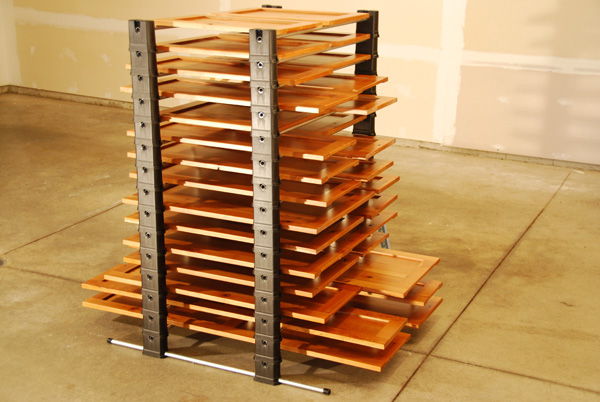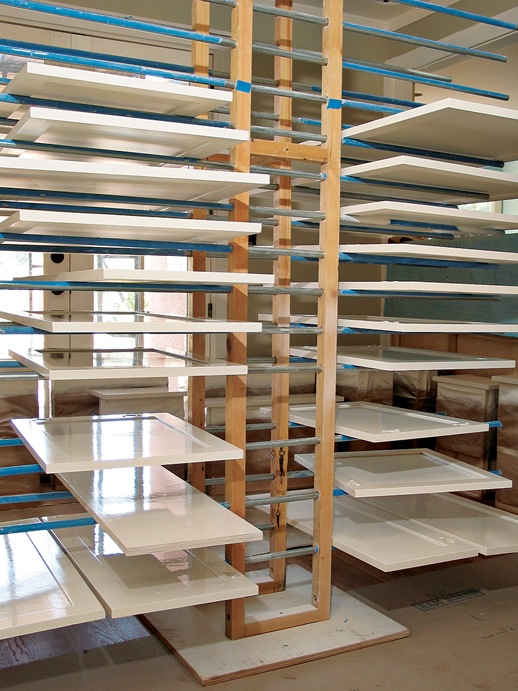The natural drying of finishing materials in the ambient environment is also calledconventional drying. By drying, liquid primers and varnishes are transformed into a solid, hard and resistant film. It is a complex process that is influenced by the chemical nature of the products and the location where drying takes place. The chemical nature of the products and how it influences drying will be the subject of another article. In what follows we will deal with ambient drying.
Factors influencing drying time
What is very important about natural drying is the time it takes. It is influenced by environmental factors, i.e. temperature, humidity and ventilation (air circulation in the room).
Temperature is inversely proportional to the drying time. The higher the temperature, the shorter the drying time and vice versa. Air humidity is directly proportional to drying. The higher the humidity, the longer the drying time will be. Being highly charged with moisture, the air receives less and less vapour from the drying process.
Natural drying of finishing products air circulation in the room is very important. This influence is best seen in the drying of water soluble products. Even if the temperature is very high, if there is no ventilation, the drying time of hydro products will be very long.
To better understand the phenomenon, think about how quickly the street dries out after rain when it's windy, even if it's autumn and cold, or laundry hung out to dry on a cold but windy day. That's because water particles in the form of vapour come out of the film and being heavy (water is heavy), stay on top of the film. The air current removes them and makes room for the next water molecules. If there is no current, the water molecules remain on the surface of the varnish film and prevent the remaining ones from escaping. Therefore, for water-based products, air ventilation in the room where drying takes place is more important than temperature.

Drying stages of film-forming products
The natural drying of finishing products takes place in stages and starts at the surface of the film and continues deep down. The time during which the film dries at the surface is called powder drying.After this time, the dust that settles on the film is no longer trapped. While in the case of primer this dust can be removed by sanding, in the case of varnish it remains in the film and constitutes a defect, the more visible the more glossy the varnish. Since it is impossible for the environment to be completely dust-free, it is best to keep this time as short as possible for a quality finish.
The next level of natural drying is called fingerprint drying and represents the time after which the object can be handled without handprints remaining in the film.
Drying for sanding is the time after which the primer can be sanded. If sanding is done too fast, the sanding will not result in fine dust, and the sandpaper will deposit gummy filler that will make it unusable. As it is difficult to detect when the gummy filler gets on the paper, sanding can continue. Even if the time will be short, it will be enough to make deep scratches in the film.
Sometimes the finished pieces have to be stacked until the next stage. As the deep drying of the film can take more than 10 hours, the notion of stacking time. Under this time the pieces cannot be placed on top of each other. If they are stacked earlier, under the action of their own weight the pieces stick together or impressions appear on the film.
End times are called assembly timeand packing time. Usually these times must be at least 24 hours. Installation time is the time after which the component parts can be assembled. If the time is not respected, the tools used for assembly may damage the film. Also, packaging an object too early can lead to impressions on the surface.
Respect of the drying time for packaging is very important. For example, when finishing with solvent-based products, packaging the parts before the recommended time has elapsed causes some of the solvent to evaporate inside the packaging. If the packaging is plastic film, the solvent remains inside and softens the film. This leaves impressions and marks on the surface due to handling.

All this information can be found in the technical data sheets that the manufacturer or supplier of paints and varnishes must make available to customers. If you buy finishing products in DIY stores, the information is on the product label. I recommend that you ask for as much information about drying as possible. They will help you to shorten working time and get a quality finish.



























Add comment